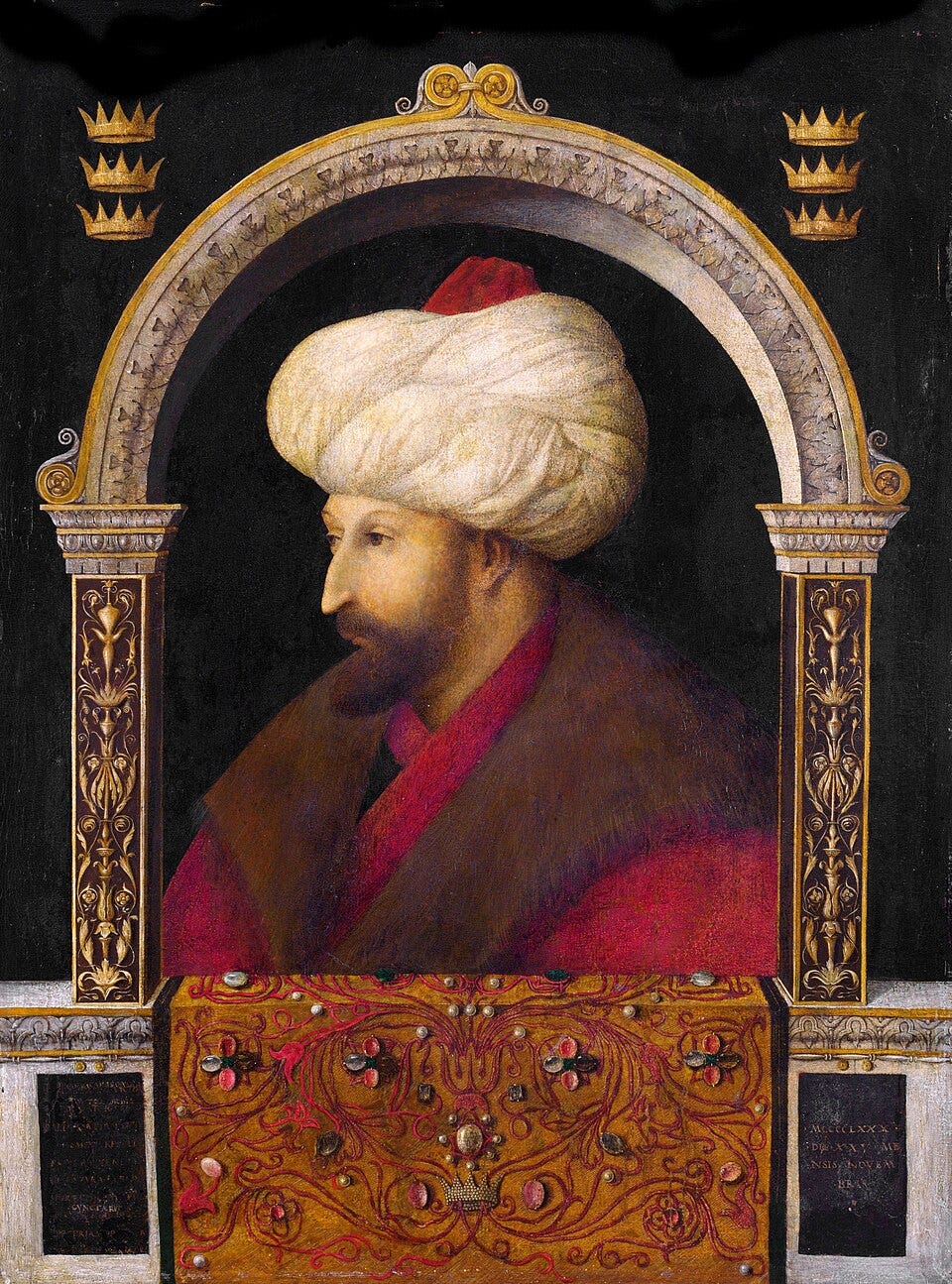Ottomans, Venetians, and the Riches of Cultural Exchange
Sometimes friends, sometimes foes, always open for business.

In 1479, the artist Gentile Bellini left home and set sail for Constantinople.
Gentile was as Venetian as the Grand Canal—he came from a family of prominent Venetian painters, he was the official portrait artist of the Doge, and his talent was often employed to create art for public buildings. Venice was the gateway to the East, far-off lands from where spices, grains, and raw fibers for textiles flowed into Europe, where the Classical texts preserved for centuries by Arab scholars found their way back to the West, along with their own treatises on science, medicine, and mathematics. In exchange, Venetian traders sold goods such as salt, paper, textiles, glassware, and of course, art.
It was a rapidly-changing world. In 1453, the Byzantine Empire fell to Ottoman invaders, and the Sultan Mehmed II now sat on the throne of Constantinople. Venetian merchants were accustomed to foreigners (the wealth of their city depe…



